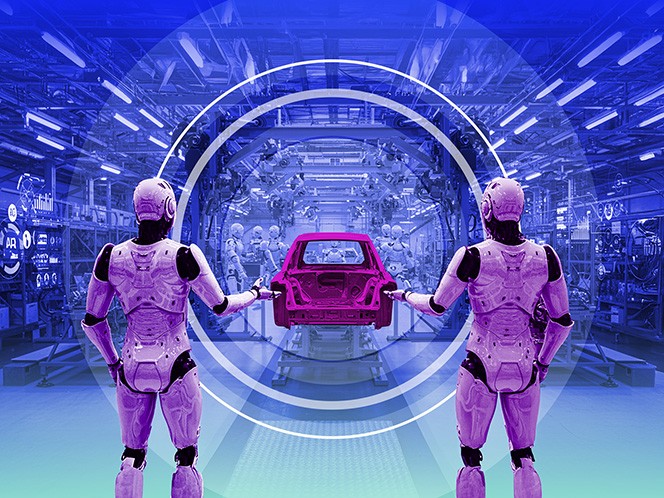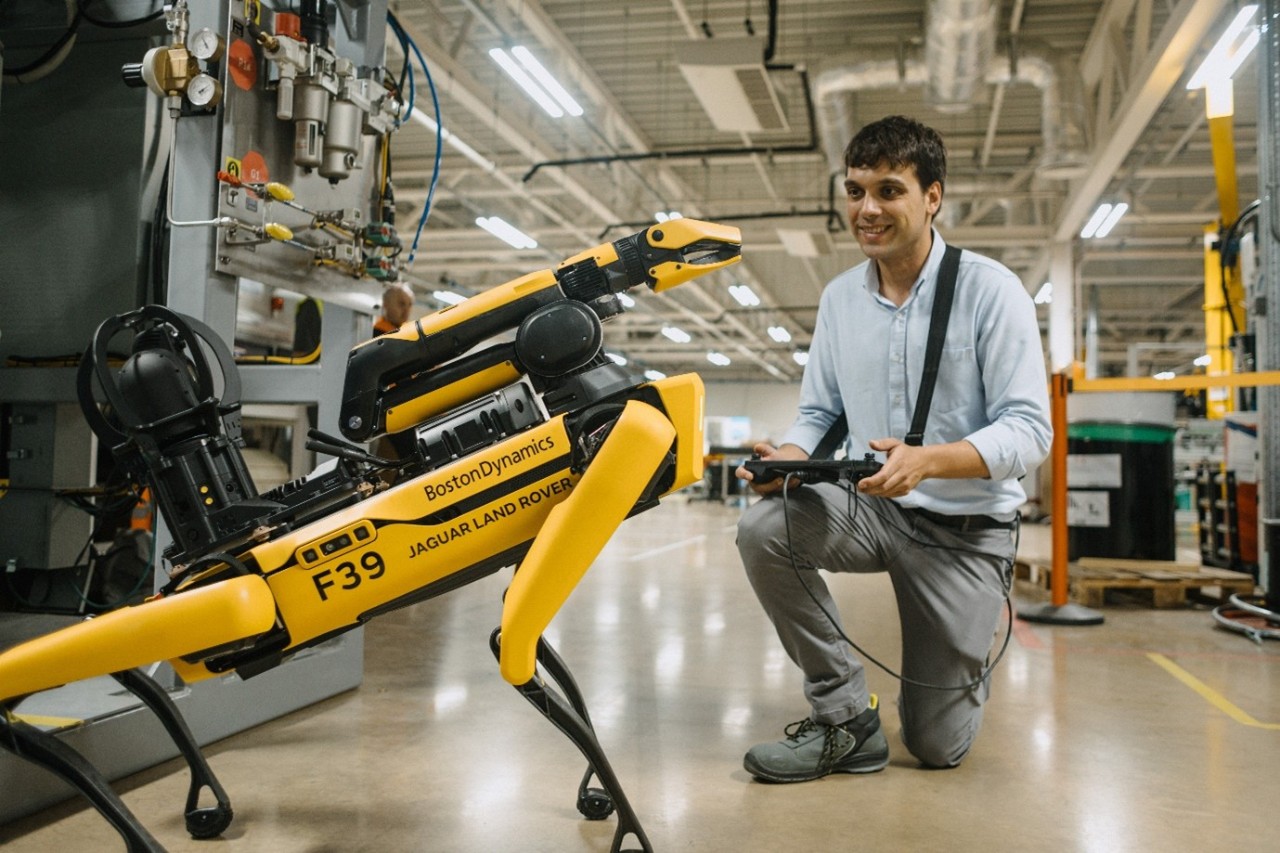Robots on the line: Automotive manufacturing gets smarter
Posted: October 06, 2025

In Berlin, Apollo works at the Mercedes-Benz factory, quality checking components before walking across the factory floor to hand them to production line colleagues for assembly. That doesn’t sound out of the ordinary, but Apollo isn’t human: He has two arms, two legs and sensor “eyes,” making him one of the world’s most advanced commercial robots.
The automotive sector is embracing rising automation. Last year, Europe’s automotive industry installed 23,000 new robots, and the automotive sector was responsible for a third of the U.S.’s new industrial robots.
Our Industrial Life
Get your bi-weekly newsletter sharing fresh perspectives on complicated issues, new technology, and open questions shaping our industrial world.
The robots building cars
Back to Apollo: Mercedes-Benz initially tested Apptronik’s Apollo robot in its Digital Factory Campus, and the company hopes the robot will be able to take on some of the physically challenging manual labor involved in car production. Jörg Burzer, Director of Production at Mercedes-Benz, told Autocar, “It’s important to choose the right tasks: repetitive and hazardous.” Because the robots are humanoid, it also means Mercedes-Benz doesn’t need to commit to expensive facility redesigns to accommodate them.
Audi’s electric vehicle factory in China has also implemented humanoid robots to carry out tasks that could pose risks to humans, such as detecting air conditioning leaks, which carry respiratory risks.
At the Jaguar Land Rover facility in England, four-legged robot Rover patrols its electric vehicle build and test center. The robot keeps an eye on the thousands of complex assets involved in the production of its luxury electric vehicles. It conducts up to 24 patrols a day, following designated routes—including opening doors and navigating stairs—to spot potential issues. Rover takes measurements, inspects valves and machinery and uses a variety of sensors to check for leaks and temperature. Human engineers then analyze Rover’s results and make repairs as necessary.
 Rover carries out patrols to spot potential issues on the factory floor
Rover carries out patrols to spot potential issues on the factory floor
In China, where there are more factory robots than the rest of the world combined, “dark factories” are taking off: fully automated facilities that operate without humans or lighting, relying largely on machines and AI systems. The Zeekr Intelligent Factory in Ningbo is capable of building 300,000 electric vehicles a year in its highly automated factory that houses more than 800 robots. Zeekr uses robotic carts to haul goods around its factory, from moving blocks of aluminum to cast body panels. Robotic arms assemble the parts into car bodies in a dark factory welding area that operates without any workers. The final product goes through AI-assisted quality control, comparing photos of each car to a database of correct cars, and only alerting humans if a problem is found.
It’s not just robots: Industrial tech
Less glamorous, but perhaps just as impactful, other automotive businesses are using behind-the-scenes tech to optimize their operations.
Audi uses machine learning and AI-powered virtual assembly planning to help it reduce its material usage. From scans, it generates 3D digital models that it uses to virtually reverse engineer machines and infrastructure, allowing its employees to virtually navigate through assembly lines. Audi also makes use of a digital twin to optimize process sequences and the work environment. Data analysis enables the company to identify areas of high energy consumption, define normal limits and then identify problems causing higher than usual usage. Machine learning and AI, trained on millions of test patterns from Audi sites, help the factory identify component flaws.
Mercedes-Benz is also making use of AI to enhance its quality control and production monitoring processes. Burzer explained that AI could help with data analysis, saying, “AI takes over the tasks we enjoy less, giving us time to focus on value-adding activities. It’s a huge efficiency gain.”
Valmet Automotive, a Finnish vehicle manufacturer, has also used operations data to improve its processes and equipment. It uses software to collect, track and communicate how its equipment is performing in real time, meaning operators can react quickly to prevent downtime at its factories. Valmet uses visualization tools to monitor processes on each production line, which enable it to improve productivity and increase its manufacturing capability as demand grows for energy-efficient electric cars.
In automotive manufacturing at least, it seems like robots and machine learning are helping to solve problems of labor shortages and dangerous work. While machines have done factory-heavy work for decades, mobile robots are creating new opportunities for factories. In the factory of the future, humans can focus on the work that adds the most value while robots and tech do the heavy lifting and monitoring.